THE 2025 BACK-TO-SCHOOL World Language Teacher Summit MASTERCLASS SESSIONS
The 2025 Back-to-School World Language Teacher Summit All-Access VIP Bundle gives you unlimited access to all 30 sessions, plus 7 bonus sessions, so you can revisit them anytime you need to. Plus $2,797 in exclusive bonuses and your PD Certificate.
Click to Open/Close ▼
DAY 1 - MOTIVATION, ENGAGEMENT, AND CLASSROOM CULTURE

KEYNOTE
The Three Keys to Unlocking Motivation
by Dr. Liam Printer
In his engaging presentation, Dr. Liam Printer emphasizes the critical role of motivation in language learning. He introduces three essential keys to unlocking intrinsic motivation: competence, autonomy, and relatedness. Dr. Printer explains that when students feel competent, they are more likely to engage and succeed. He encourages teachers to create a classroom environment that fosters autonomy by allowing students to make meaningful choices in their learning. Relatedness is cultivated through cooperative learning and building strong connections among students and with the content. By focusing on these psychological needs, teachers can shift their approach from traditional grammar drills to more engaging, story-based methods that resonate with students. Dr. Printer's insights are backed by extensive research, making a compelling case for adopting comprehensible input strategies that not only enhance language acquisition but also create a more enjoyable and effective learning experience for both educators and students.
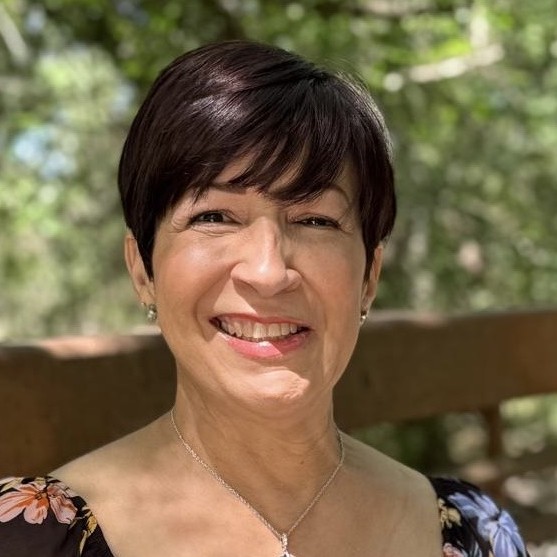
I'm Happy to Be in Your Class
by Dra. María Cubero
In her engaging session, Dr. María Cubero emphasizes the importance of building strong relationships with students to create a welcoming classroom environment. Drawing from her extensive teaching experience, she shares practical strategies that foster student happiness and engagement. Dr. Cubero introduces unique greeting rituals at the classroom door, such as high-fives and hugs, which help students feel valued and connected. She also discusses the significance of personalized class dedications and regular check-ins to understand students' feelings and needs. By incorporating hands-on projects and celebrating student achievements, she creates a dynamic learning atmosphere. Dr. Cubero's insights highlight how small, thoughtful actions can lead to significant improvements in student morale and classroom culture, ultimately enhancing the learning experience for all.
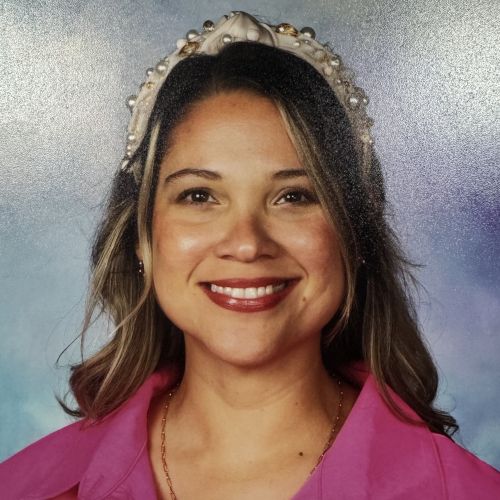
Se Habla Español, Pero Spanglish Está Allowed
by Silvana Ibañez
Silvana introduces the concept of translanguaging, encouraging teachers to embrace the natural language connections students make. She shares practical strategies for integrating Spanglish into the classroom, allowing students to communicate confidently while learning. Silvana's approach emphasizes that language learning is about communication, not perfection, and she aims to empower educators with tools that foster student engagement and understanding. With her relatable style and commitment to teacher support, Silvana inspires fellow educators to embrace the beauty of bilingualism in their classrooms.

Increasing Motivation & Engagement: Putting Self-Determination Theory To Work In Your Language Classroom
by Martha Cox-Stavros
In her insightful presentation, Martha Cox Stavros explores how to boost motivation and engagement in language classrooms using Self-Determination Theory. She emphasizes three key psychological needs: competence, autonomy, and relatedness. By fostering competence, teachers can help students feel successful through achievable tasks. Autonomy allows students to make choices in their learning, enhancing their sense of ownership and agency. Relatedness builds a sense of community, making students feel connected and valued. Martha provides practical strategies, such as using class constitutions, personalized questions, and varied reading activities, to meet these needs. Her approach encourages teachers to create a supportive environment where students can thrive, ultimately leading to improved language acquisition and a more engaging classroom experience. This session is a valuable resource for educators seeking effective, low-stress methods to enhance student learning and motivation.
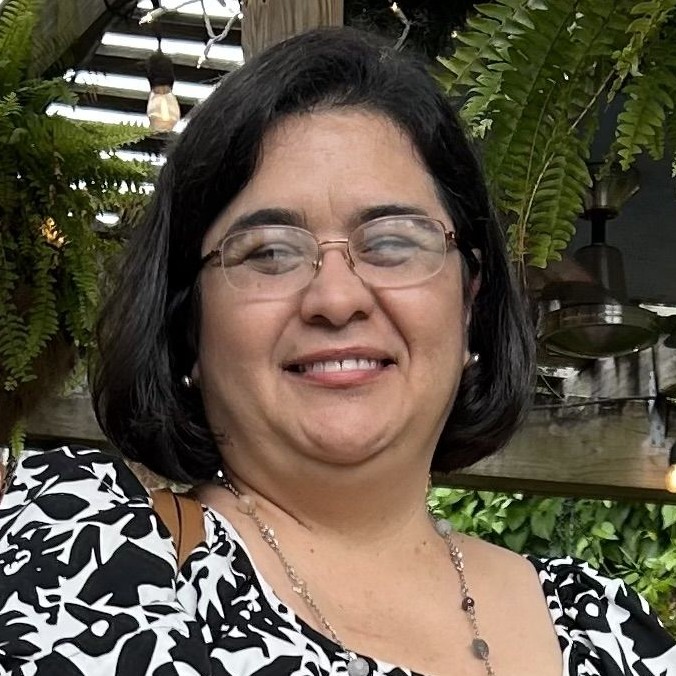
Harnessing the Power of Community
by Dr. Ghedy Matus
In her session, Dr. Ghedy Matus emphasizes the importance of building a strong classroom community to enhance student engagement and learning. She discusses effective classroom routines, communication strategies, and the assignment of classroom jobs that foster student ownership and responsibility. Dr. Matus highlights the need for clear expectations and structured logistics to help students understand their roles and the classroom environment. She also suggests using varied seating arrangements and collaborative activities to promote interaction and skill development. By incorporating real-world skills and encouraging student input, teachers can create a supportive atmosphere that reduces stress and increases participation. Overall, Dr. Matus provides practical tools and insights that empower educators to create a vibrant, organized, and engaging learning space for their students.

Planting the Seeds of Success with a Growth Mindset
by Kathleen Kampa
Join Kathleen Kampa in "Planting the Seeds of Success with a Growth Mindset" as she shares practical strategies, chants, and activities to nurture a growth mindset in young learners and support the whole child in your classroom. Discover how to foster curiosity, learner agency, positive feedback, and perseverance through engaging lessons rooted in joy, movement, and creative reflection. This uplifting session is filled with classroom-ready ideas and inspiration for educators looking to help every student thrive.

ALL-ACCESS VIP BUNDLE BONUS SESSION
A Classroom That Manages Itself
by Stephanie Fritz
In the presentation Stephanie Fritz, highlights key strategies for effective classroom management, emphasizing the importance of transparency, proactive management, and relationship-building with students. By integrating these approaches, educators can expect to build a classroom environment where students are engaged, self-driven, and capable of managing themselves, leading to a seamless and collaborative learning experience.

ALL-ACCESS VIP BUNDLE BONUS - LEGACY SESSION
Inspiring Curiosity in The World Language Class
by Megan Smith
To encourage more communication and engagement in the classroom, Megan shares several ways teachers can spark curiosity in their students. Modeling good questions, intriguing resources, and visually appealing handouts, this presentation offers examples with art, music, and housing that motivates students to dig deeper and talk longer.
Click to Open/Close ▼
DAY 2 - BUILDING THE FOUNDATION: FIRST WEEK & CLASSROOM SETUP

1st Week of School Plans
by Allison Wienhold
In her session, Allison Wienhold shares actionable, classroom-tested activities for the first week of school, designed to establish a positive classroom community and build foundational language proficiency. She covers key preparation steps, essential first-day activities like "Name Game Speedball," and diverse ideas for creating engaging language practice. Allison highlights the importance of balancing community-building activities with logistical and administrative tasks, ultimately supporting students' comfort and confidence in language learning.

Creating a Syllabus For Your World Language Classroom
by Ashley Mikkelsen
In her presentation, Ashley Mikkelsen emphasizes the importance of creating a clear and effective syllabus for world language classrooms. She explains that a well-structured syllabus not only outlines classroom expectations and policies but also enhances communication with students and their families. Ashley provides practical tips on what to include, such as course descriptions, grading information, and attendance policies. She stresses the value of setting clear guidelines for language use in class, encouraging 90% immersion in the target language. Additionally, she discusses the significance of having a late work and retake policy, which fosters a supportive learning environment. By preparing these elements ahead of time, teachers can reduce stress and create a more organized classroom, ultimately leading to better student engagement and success throughout the school year.

Three Tools to Help Student Understanding in the Classroom
by Rebecca Perantoni
In her presentation, Rebecca Perantoni introduces three effective tools to enhance student understanding in the classroom: Frayer Models, Knowledge Organizers, and Smash Doodles. She explains how Frayer Models help students learn new vocabulary by breaking down words into definitions, sentences, synonyms, and illustrations, fostering deeper retention. Knowledge Organizers serve as concise, one-page resources that outline essential information for a unit, making it easier for students to access key concepts during lessons. Perantoni also shares her favorite, the Smash Doodle, a creative activity that allows students to visually demonstrate their understanding of texts across subjects. By incorporating these tools, teachers can create engaging and hands-on learning experiences that promote retention and understanding, ultimately leading to more effective teaching outcomes. Rebecca emphasizes the importance of creativity and active participation in learning, encouraging educators to adopt these strategies for a more dynamic classroom environment.

Lighten Your Load From The Get-Go!
by Christine Webb
In her session, Christine Webb offers practical strategies to help language teachers start the school year with confidence and ease. She emphasizes the importance of reflection on past teaching experiences, encouraging educators to identify successful activities and areas for improvement. Christine introduces actionable steps, such as creating effective seating arrangements and establishing routines that foster a welcoming classroom atmosphere. She also highlights the use of "passwords" to engage students and reinforce language acquisition, making learning more interactive. Additionally, Christine discusses the significance of explaining the purpose behind language learning, connecting it to students' future careers and cultural understanding. By prioritizing self-care and intentional planning, teachers can create a supportive environment that enhances student engagement and success. This session is a valuable resource for educators looking to lighten their load and make a meaningful impact in their classrooms.

The Power of Lesson Planning When Integrating Educational Games in L2 Classroom
by Dida Papalexiou
In her presentation, Dida Papalexiou emphasizes the importance of lesson planning when integrating educational games into language learning. She highlights that effective planning transforms games from mere fun into powerful learning tools. Dida discusses how to set clear learning objectives using the SMART framework, ensuring that games align with language goals. She shares practical examples, such as using Minecraft Education for storytelling and problem-solving, and Flippity.net for vocabulary and grammar review. Dida stresses the need for understanding student needs and adapting activities to foster collaboration and engagement. She also addresses classroom management and the importance of timing, reflection, and assessment in game-based learning. By focusing on purposeful game integration, teachers can enhance student interaction and language skills, making lessons more engaging and effective. Dida encourages educators to continuously experiment and reflect on their practices for ongoing improvement.

Starters and Finishers for the WL Classroom
by Dana Miller
In her session, Dana Miller presents practical and engaging starters and finishers for world language classrooms, aimed at enhancing student engagement and comprehension. With nearly 30 years of teaching experience, Dana emphasizes the importance of incorporating comprehensible input (CI) strategies alongside traditional methods, especially for students preparing for advanced Latin courses. She shares a variety of quick activities, such as the "black box" guessing game, idiomatic expressions, and weekend chat mats, which can be easily implemented to kick off lessons or wrap up discussions. Dana encourages teachers to adapt these activities to fit their unique classroom settings, highlighting that even small modifications can lead to significant improvements in student participation. Her insights focus on creating a low-stress environment where students can thrive, ultimately fostering a deeper understanding of the language and culture. This session is a valuable resource for educators seeking effective, ready-to-use strategies to enrich their teaching practice.

ALL-ACCESS VIP BUNDLE BONUS - LEGACY SESSION
Mindfulness in the World Language Classroom
by Lynn Ramsson
In this presentation, veteran teacher Lynn Ramsson offers a definition of mindfulness while explaining the benefits of incorporating notions of mindfulness into teaching and learning world languages. She suggests specific strategies that can make a world language classroom more mindful while pointing out CI methods that are particularly compatible with mindfulness.
Click to Open/Close ▼
DAY 3 - ENERGIZING ACTIVITIES FOR EARLY ENGAGEMENT

Zero Prep Spanish Sponge Activities for Any Level
by Jessica Hall
In her session, Jessica Hall introduces effective "sponge activities" for Spanish teachers that require zero preparation and can be used at any level. These activities are designed to fill unexpected gaps in class time or to replace ineffective lessons. Jessica explains the concept of sponge activities, emphasizing their role in soaking up extra time without needing prior setup. She shares five engaging activities: a two-page foldable for sentence starters, categories foldable, whiteboard fill-in-the-blank exercises, charades, and Pictionary. Each activity is adaptable to various vocabulary and grammar topics, making them versatile tools for teachers. Jessica encourages educators to use these fun, interactive methods to boost student engagement and understanding, ensuring that every minute in the classroom counts. By incorporating these sponge activities, teachers can create a more dynamic learning environment while alleviating the stress of last-minute lesson planning.

Interpersonal Speaking Activities You Can Use Tomorrow
by Jamie Rodriguez
In her engaging workshop, Jamie Rodriguez emphasizes the importance of interpersonal speaking activities that can be implemented immediately in the classroom. She shares her insights on the difference between performance and proficiency, helping educators understand how to create a supportive environment for students who may feel anxious about speaking. Jamie introduces the concept of guided conversations, which provide structured prompts to facilitate meaningful dialogue among students. By combining familiar topics with new vocabulary, these activities encourage students to practice speaking in a low-pressure setting. Jamie also discusses the significance of normalizing speaking in class and offers strategies to help students overcome their fears, such as providing vocabulary lists and fostering a strong classroom community. Ultimately, her session equips teachers with practical tools to enhance student engagement and proficiency in language learning, making it easier for educators to implement effective speaking activities from day one.
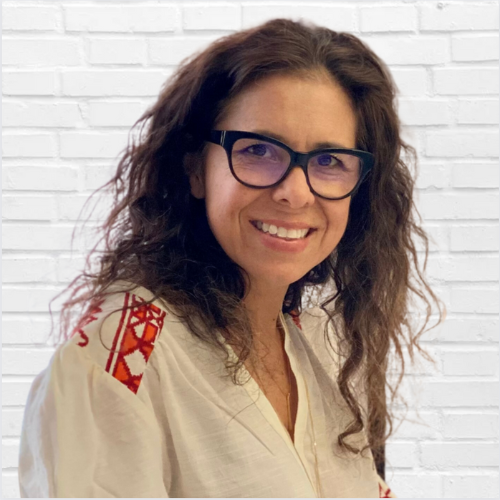
Let's Play in all the Modes
by Claudia Elliot
Claudia shares exciting, low-prep games that boost student engagement and foster collaboration. Her practical strategies are designed to help educators start the school year with confidence, ensuring that every student feels included and motivated to learn.

Excellent Analog Activities in a Digital World
by Eric Richards
In his session, Eric Richards presents practical, low-prep activities that help language teachers engage students in the target language while navigating the challenges of a digital classroom. He emphasizes the importance of balancing technology use with effective non-digital activities, addressing the pressures educators face to constantly integrate tech tools. Eric introduces several activities, such as "Read, Draw and Discuss" and "Listen, Draw and Discuss," which encourage creativity and enhance listening comprehension. These activities not only allow students to express their understanding through drawing but also promote repetition of language structures. By incorporating doodling and personalization, Eric demonstrates how these methods can foster a more engaging learning environment. His insights remind teachers that they can create impactful lessons without overwhelming themselves, ultimately leading to increased student engagement and retention of language skills.

Engaging Generation Alpha with Low Tech Gamification
by Maureen Lamb
Discover engaging, low-tech strategies for teaching Generation Alpha in this insightful session with Maureen Lamb. Explore practical classroom activities that get digital-native students off their screens and excited about language learning through interactive, gamified methods. Perfect for educators seeking hands-on ideas to build authentic connections and boost participation without relying on technology.

Create 60-minute Lessons in 90 Seconds Using AI to Maximize Student Engagement
by Alasdair Harris
In his session, Alasdair Harris introduces how to create engaging 60-minute language lessons in just 90 seconds using AI. He emphasizes the challenges teachers face, such as time constraints and the need for engaging materials. Alasdair shares insights from his extensive experience, including training over 2,000 teachers on using AI effectively in language instruction. He highlights the benefits of using Lingoteach AI, which allows teachers to save significant preparation time while enhancing student engagement. By simplifying lesson creation, teachers can focus more on teaching and less on administrative tasks. Alasdair also discusses the importance of adapting lessons to meet diverse student needs, ensuring that every learner is engaged. This session is a valuable resource for educators looking to improve their work-life balance and bring innovative teaching methods into their classrooms.
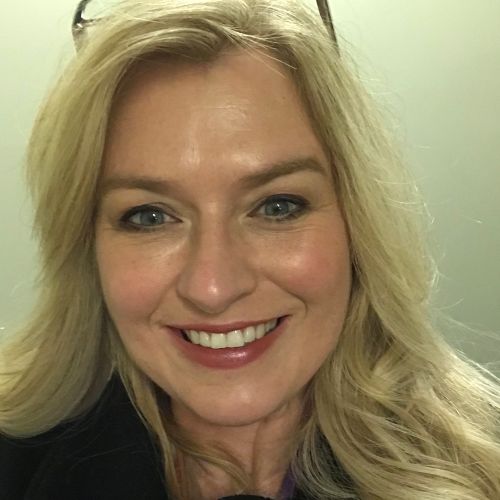
ALL-ACCESS VIP BUNDLE - BONUS - LEGACY SESSION
Don't Start with the Syllabus: Building Relationships First
by Nissa Quill
Nissa challenges teachers to rethink their first day with students to avoid jumping into the rules in English. Start with some community-building communicative activities like card talk or kid grid.
Click to Open/Close ▼
DAY 4 - ASSESSMENT & STUDENT UNDERSTANDING
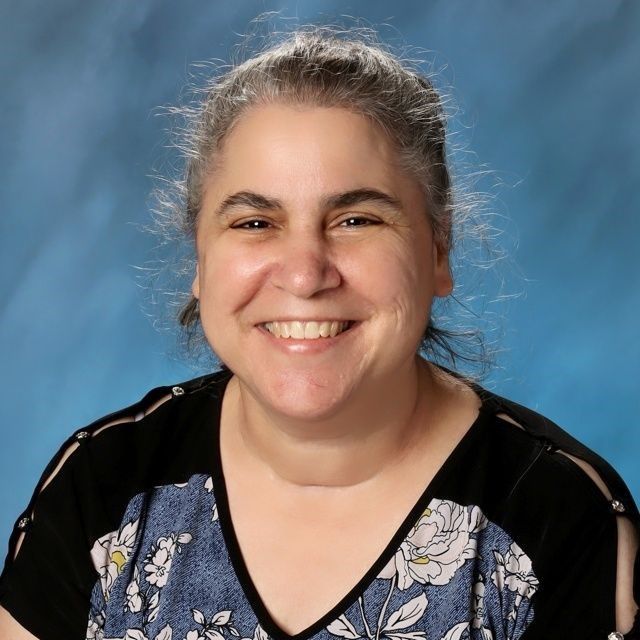
The Difference Between Summative and Formative Assessment
by Pamela Parks
In her engaging session, Pamela Parks clarifies the crucial differences between formative and summative assessments, emphasizing their distinct purposes in the classroom. She explains that formative assessments are quick, informal checks that help teachers gauge student understanding during lessons, allowing for immediate adjustments to instruction. In contrast, summative assessments are comprehensive evaluations at the end of a unit, designed for students to showcase what they have learned. Pamela encourages teachers to incorporate frequent formative assessments, such as quick writes and interactive activities, to enhance student engagement and inform their teaching practices. By understanding these differences, educators can create a more effective learning environment that meets the diverse needs of their students, ultimately leading to improved outcomes and greater classroom success.

Raising the Profile of Languages: How to Survive in a STEM World
by Sohelie Zafar
In her session, Sohelie Zafar addresses the challenges language teachers face in a STEM-focused educational environment. She emphasizes the importance of raising the profile of modern foreign languages (MFL) and provides practical strategies for educators to advocate for their subject. Sohelie highlights the misconceptions surrounding language learning, such as the belief that it is less valuable than STEM subjects. She encourages teachers to engage staff, students, and parents through effective communication and innovative resources. By fostering a collaborative school ethos and showcasing the relevance of languages in various careers, teachers can help shift perceptions. Sohelie also shares tools and platforms that make language learning more engaging and accessible. Ultimately, her session inspires educators to not only survive but thrive in a STEM world, ensuring that language education remains a vital part of a well-rounded curriculum.

CI Tools To Level Up Your Class
by Carolina Gómez
In her engaging presentation, Carolina Gómez introduces four effective tools for using comprehensible input (CI) in the language classroom. With over 20 years of teaching experience, Carolina emphasizes the importance of making language accessible and enjoyable for young learners. She explains techniques such as circling, personalized questions and answers (PQA), picture talk, and story asking. Each method encourages student participation and helps reinforce vocabulary and comprehension. By using relatable topics, like animals, Carolina shows how to create a lively classroom atmosphere where students feel motivated to engage with the language. Her practical strategies not only support language acquisition but also foster a sense of community among students. Carolina's insights empower teachers to implement these techniques easily, making language learning a fun and meaningful experience for their students.

TESOL: Multilingual classrooms, young learners ages 4–10
by Maude Vuille
Explore multilingualism in young learners’ classrooms with Maude Vuille as she shares insights from her 20 years of experience teaching children ages 4–10 in Geneva, Switzerland. Learn about learner profiles, language dominance, and practical strategies like bilingual resources and flashcards to foster language development and classroom belonging. Perfect for any educator looking to differentiate and support multilingual or monolingual students alike.

CI for Novice Learners: Techniques for Beginning Language Classes
by Jade Greene
In her presentation, Jade Greene emphasizes the importance of using comprehensible input (CI) to effectively teach novice language learners. She shares practical techniques that help students understand and engage with the language while building their confidence. Jade encourages teachers to start with simple language and gradually introduce new vocabulary, ensuring that students can absorb the language naturally. She highlights the significance of using high-frequency vocabulary and visual aids to support comprehension, as well as the value of creating a low-pressure environment where mistakes are seen as part of the learning process. By focusing on meaningful communication and personalized questions, teachers can make language learning relevant and enjoyable. Jade's insights remind educators that less can be more; by simplifying their approach and prioritizing student understanding, they can foster a positive and effective language learning experience.

CI for Novice Learners: Techniques for Beginning Language Classes
by Kathryn Kosmider
In her engaging session, Kathryn Kosmider empowers world language teachers to shift from fear to fearless implementation in their classrooms. She emphasizes the importance of starting small with actionable strategies that enhance language use and student engagement. Kathryn introduces the concept of classroom jobs, which not only foster student accountability but also lighten the teacher's workload. She encourages educators to use anchor phrases and gestures to promote target language use, ensuring that students feel comfortable and confident. Additionally, Kathryn highlights the benefits of incorporating movement through activities like gallery walks, which reduce stress and enhance learning. By focusing on small wins and building routines, teachers can create a dynamic learning environment that supports both their own growth and their students' success. With practical tips and a supportive approach, Kathryn inspires teachers to embrace new strategies and cultivate a thriving language classroom.

ALL-ACCESS VIP BUNDLE BONUS SESSION
What Every Teacher Should Know About Dyslexia
by Anna Geiger
In her presentation, Anna Geiger discusses the important aspects of dyslexia that every teacher should know. She clarifies common misconceptions about dyslexia, emphasizing that it is a disability, not just a learning difference or a gift. Geiger highlights the signs of dyslexia across different grade levels and stresses the importance of early screening and effective intervention. She reassures educators that while teaching students with dyslexia can be challenging, it is entirely possible with the right strategies and support.

ALL-ACCESS VIP BUNDLE BONUS - LEGACY SESSION
Building Community through Self-Assessment and Reflection
by Tiffany Dalton López and Kimberly Clela Davis
Kimberly Clela Davis and Tiffany Dalton López share their experiences of encouraging student reflection in the classroom to build a community with their students. They emphasize the fact that reflection is a skill that needs to be taught and the importance of scaffolding the process in order to maximize its potential. They also suggest a practical strategy, together with concrete examples, for implementing this approach in the classroom.
Click to Open/Close ▼
DAY 5 - INNOVATION AND ADVOCACY IN LANGUAGE EDUCATION

Design Thinking Meets Language Teaching
by Christopher Dabb
In his engaging presentation, Christopher Dabb explores the intersection of design thinking and language teaching, emphasizing the importance of using technology effectively in the classroom. He shares practical tools and techniques, particularly focusing on Canva, to help language educators create visually appealing and organized resources that enhance student engagement. Christopher highlights how design thinking can simplify lesson planning and improve student collaboration, making it easier for teachers to track progress and adapt their teaching methods. He encourages educators to embrace new technologies not just for the sake of trends, but to make a meaningful impact on student learning. By sharing his own classroom experiences and providing actionable templates, Christopher empowers teachers to rethink their instructional strategies, ultimately fostering a more dynamic and supportive learning environment for their students.

Language In Action: Preparing for Back to School
by Stuart A Blair
In his session, Stuart A. Blair introduces "Language in Action," a creative and inclusive approach to language teaching that blends sequential art, drama, improvisation, and language meditation. He emphasizes the importance of engaging students emotionally and intellectually, making language learning dynamic and accessible. Stuart shares practical strategies that teachers can easily adapt for various age groups, from early years to high school. Key benefits include enhancing fluency through real communication, improving retention with visual aids, and fostering a safe space for risk-taking and creativity. By incorporating techniques like comic creation and interactive activities, educators can cater to diverse learning needs, including those of neurodivergent students. Stuart's insights encourage teachers to embrace innovative methods that make language acquisition enjoyable and effective, ultimately supporting students' growth and confidence in their language skills.

Build and Sustain Strong Connections from Day 1 with Personalized Questions and Answers
by Bertha Delgadillo
Bertha Delgadillo shares a powerful classroom strategy using hexagonal thinking to build strong student connections and foster language learning from day one. This versatile approach combines personalized questions and answers with visual organization, making it especially effective for world language teachers. She provides step-by-step guidance for implementing hexagonal thinking activities, from initial student interviews to creating class-wide connection displays. The method includes scaffolded language support through slide decks, special person interviews, and write-and-discuss activities that help students feel successful using the target language early on. Bertha emphasizes how teachers can extend this strategy throughout the year, using it as both a community builder and a thematic unit opener. Her practical approach includes modifications for different proficiency levels and suggestions for meaningful follow-up activities like student presentations and video projects. The strategy's strength lies in its ability to create safe spaces for language practice while building lasting classroom connections.

Strategies and Resources for Using and Creating Videos in your Classroom
by Kristin Montgomery and Celso Gil
In their session, Kristin Montgomery and Celso Gil share effective strategies for using and creating videos in the language classroom. They emphasize the value of social media videos, which are often free, short, and engaging for students. The presenters highlight three types of video sources: language organizations, individual creators, and tourism boards, each offering unique cultural insights and language learning opportunities. They also discuss practical tools like EDpuzzle and Formative, which allow teachers to create interactive video lessons and track student progress. Additionally, Kristin and Celso encourage teachers to consider starting their own YouTube channels as a way to connect with students and share educational content. They conclude by introducing AI tools for video and audio creation, suggesting that these can enhance learning experiences. Overall, their insights provide language educators with accessible resources to increase student engagement and make lessons more dynamic.

Go Viral! Using Target Language Social Media With Novice & Intermediate Learners
by Lisa Bartels
In her engaging session, Lisa Bartels explores innovative ways to integrate social media into language learning for novice and intermediate students. She emphasizes the importance of using platforms like TikTok, YouTube, and Instagram to enhance reading, writing, listening, and speaking skills. Lisa shares practical activities, such as analyzing memes, creating listicles, and using online quizzes, that make learning relevant and fun. She highlights the benefits of social media in fostering cultural connections and promoting student engagement. By providing curated resources and strategies to navigate potential challenges, such as off-task behavior and blocked sites, Lisa empowers teachers to harness the power of social media effectively. Her insights encourage educators to adapt their teaching methods, making language learning more accessible and enjoyable for students. Ultimately, Lisa's session inspires teachers to embrace social media as a valuable tool in their classrooms, bridging the gap between students' interests and language proficiency.

Embracing AI: Transforming English Teaching for the Future
by Fanest Coronado
In her presentation, Fanest Coronado explores the role of AI in language teaching, emphasizing its potential to enhance classroom experiences. She introduces practical tools like ChatGPT and Grammarly, which can save teachers time and provide personalized learning opportunities for students. Coronado highlights the importance of using AI to support students who need extra help, while also encouraging creativity and engagement through interactive activities. She shares insights from an MIT study that suggest AI should be used after independent thinking to foster originality and ownership in student work. Coronado stresses that while AI can assist teachers, it cannot replace the essential human elements of empathy and mentorship. By integrating AI thoughtfully, educators can empower their teaching and create a more inclusive learning environment. Ultimately, she encourages teachers to embrace AI as a supportive tool rather than a replacement, reminding them that their role is irreplaceable in guiding and connecting with students.

ALL-ACCESS VIP BUNDLE BONUS - LEGACY SESSION
Data Driven Advocacy for World Language
by Tanya Schubert
Tanya’s presentation talks about the challenges and limitations a WL teacher faces at school and in the community. She suggests ways to overcome these and encourage more people from the community to support WL education. She elaborates on how teachers have the power to control their curriculum, instruction, and assessment & outcomes, and how to advocate their programs to the community.
get your ALL-ACCESS VIP BUNDLE with permanent access to all 37 sessions plus your pD certificate
© 2025 World Language Teacher Summit All rights reserved. Curated by Speaking Latino and Language Babel.
